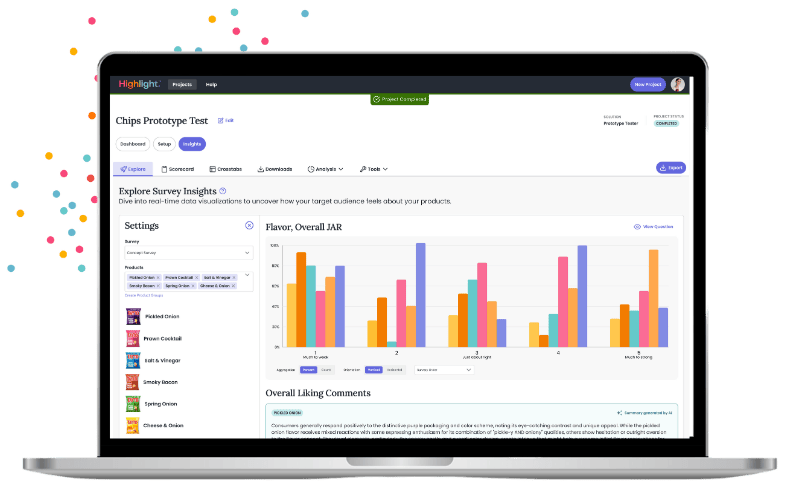30,000 new products are launched every year and 90% of them fail. Some fail publicly with everyone watching, others fail on a smaller stage but with the same amount of pain. The societal impact is in the human capital and resource waste that goes into designing products that are destined to fail, even if “competently executed,” said best by ex-Google entrepreneur Roberto Savoia. Savoia calls this “The Law of Market Failure.” There are a growing number of paradigms, tools, and consultancies attempting to beat The Law of Market Failure.
Data can help founders, product developers and innovators beat The Law of Market Failure and increase the likelihood of a product succeeding in the market. This has a consumer benefit too. There’s no greater frustration for consumers than purchasing an item they’re excited about, expecting one thing but only to be disappointed.
The market research industry has exploded in the past 5 years with better and smarter testing tools. The quantitative research space has become a lot more sophisticated as digital data collection and analysis has become more prolific, but when there’s a physical product involved, it’s really challenging to get reliable, timely insights. This would be possible if the product testing methods of the 80’s were modernized for the 2020’s. Research platform Highlight has aimed to do this, and in the process learned the following:

First, you must plan for scale.
It’s relatively easy to make an impact at a small scale of one or 10. But to make big impact, you must be able to scale your approach to reach 1000s, or millions. You want to make sure that you’re laying the groundwork of your technology and your business so it can make a real impact in the future.
To do this, use a modern tech stack with a strong focus on fault tolerance and scalability. They’re using a lot of the same types of technologies that firms in Silicon Valley are using like Go and GraphQL, which isn’t the typical approach in the market research industry. However, such technology is fast, agile, and cost-effective – paving the way for big impact at scale.
Don’t reinvent the wheel.
Market research is a logistics-heavy industry and efficiency is hard to come by, especially when it comes to qualitative work and physical product testing. There seems to be a constant battle between customization and agility, with project timelines often bogged down by kickoffs, iteration, and time wasted creating drafts from scratch. In an age when we’re accosted to getting what we need, when we need it, on our terms, there’s little patience for traditional market research timelines.
By hardcoding standard processes, design specs and research components into a research platform, most of the setup work is done already. All that’s needed is to upload the product SKUs that they would like to test and can transition right into audience definitions and survey drafting.

Let your algorithms do the heavy lifting.
We’re living in a time where we have so much data, we sometimes don’t know what to do with it. No matter how much of an excel ninja you are, analysis paralysis can feel insurmountable… especially when you’re working with large customer databases. Here’s where algorithms come into play.
An algorithm is the list of instructions and rules that a computer needs to do to complete a task, and they’re in everything we do. Take Google Search: Google ranking systems are designed to sort through hundreds of billions of webpages in Google’s Search index to find the most relevant results and present them in a way that helps you find what you’re looking for. This provides a solution both customized and automated. Using the same principals, you can make sample management more efficient and scalable, efficiently and effectively.
As decision-making continues to become more data-driven and access to data becomes easier and more accessible, it’s imperative that the product development process keeps up. The tech industry is leading the charge, with streamlined processes and reductions in physical and human capital waste that once bogged down dev cycles. It’s time the market research industry, and the tools that power it, follow suit before it gets left behind.
This article was originally published on ESOMAR's Research World by Highlight's founders Dana Kim and Ethan Kellough.


![[Image] Highlight team Holiday party 2022](https://www.letshighlight.com/hs-fs/hubfs/%5BImage%5D%20Highlight%20team%20Holiday%20party%202022%20.png?width=1920&height=1080&name=%5BImage%5D%20Highlight%20team%20Holiday%20party%202022%20.png)

